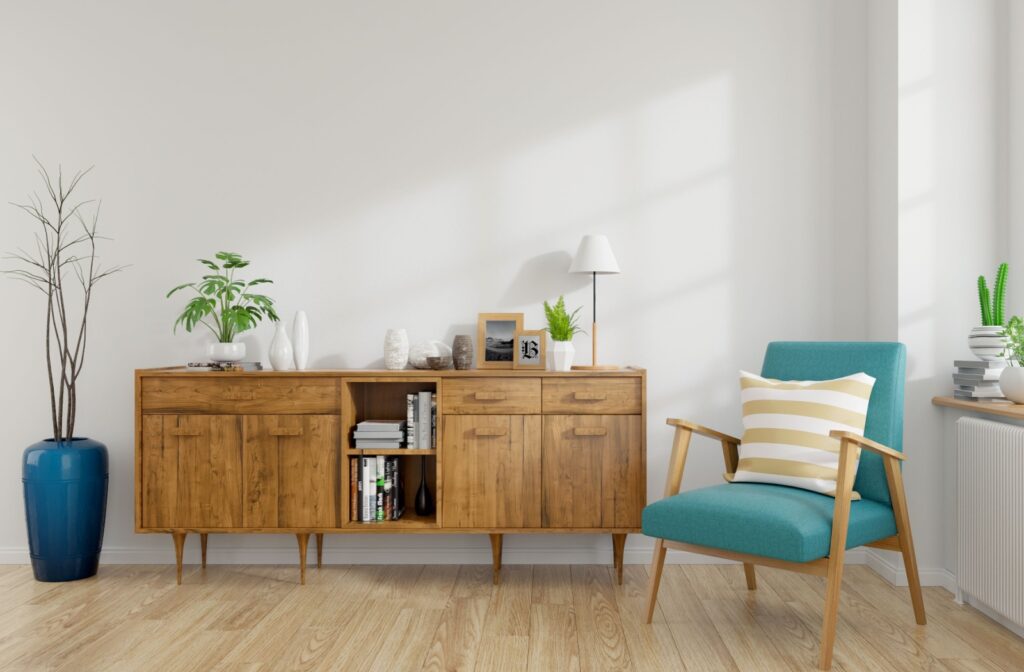3 Types of Redwood Furniture to Avoid: Paper-Thin Panels & More Scams
Redwood furniture comes in a wide variety of materials and styles. With merchants each making their own claims, buyers often end up confused after browsing.
Here, we remind you to be cautious if you encounter these three types of redwood furniture to avoid being scammed.

1. Redwood Furniture with Paper-Thin Panels
There are no mandatory national standards for the thickness of a piece of furniture’s panels or the width of its legs. Due to the high cost of redwood raw materials, some manufacturers have taken "frugality" to an extreme by making panels (such as chair seats, table tops, and cabinet baffles) as thin as paper.
For example, a single piece of wood that could normally be cut into 3 panels is instead cut into 4 to save material costs. Take an octagonal table as an example: in traditional, standard craftsmanship, the tabletop thickness is usually no less than 12mm. Now, with redwood prices soaring, some manufacturers reduce the thickness to 10mm to cut costs, while others go even further—making it 9mm, 8mm, or even thinner.
When purchasing, always choose furniture with solid, adequately thick panels. The simplest and most practical way to judge panel thickness is to "listen". Gently tap the center of the panel: if the sound is deep and clear, the panel is unlikely to be too thin. Conversely, if the sound is hollow, you need to be alert. Thin panels transmit vibrations more strongly, leading to a hollow "thud" sound. This method has no strict quantitative parameters and relies on hand and ear perception, but there is a clear difference between the sound of a thick panel and a thin one—you will notice it if you pay attention.
If you still can’t tell by listening, you can combine this with a hand-pressing test for a comprehensive judgment. Press firmly on the tabletop: if there is no give, the panel thickness meets the load-bearing requirement. If the tabletop dips slightly or feels flexible when pressed, the panel is definitely too thin.
We emphasize panel thickness for two key reasons: First, overly thin panels are prone to deformation and even waviness during long-term use (see image below). Second, if a manufacturer cuts corners on panels, how can you trust the quality of other components? Only by using sufficient high-quality materials can a fine piece of furniture be made. While this increases costs, skimping on essential materials drastically reduces the furniture’s value.
2. Furniture with Weird Shapes and Random Matching
A few years ago, the redwood furniture market boomed, and prices rose steadily. This attracted various investments into the industry. However, many manufacturers—whether due to a desire to stand out or a lack of craftsmanship—produced furniture that was bizarre and ill-proportioned.
Examples include: imperial chairs that are top-heavy, long side tables with mismatched proportions, and carvings with disjointed themes. Carvings on classical furniture are acceptable, but modern redwood beds typically feature themes like landscapes, flowers, or birds. Yet some manufacturers insist on carving Guanyin, Buddha, or scenes from "Nezha Conquers the Dragon King" on bedroom beds. Would you really want Buddha or Nezha "watching" you sleep? Never fall for fancy sales talk—this is not innovation, but a joke.
3. Furniture with Excessive Patching (No Resale Value)
When buying wood furniture, carefully check large components like panels, legs, and edgings to see if they have been patched and touch-up painted. Important note: Patching is completely different from panel joining! Additionally, even low-quality redwood furniture usually has a decent exterior finish. To assess the true quality, you must focus on the bottom and hidden corners.
Currently, some high-end redwood furniture-producing regions in China have highly advanced patching and touch-up techniques—making the exterior indistinguishable from normal redwood furniture. However, the internal quality is even worse than plastic boards. Buying such furniture is a nightmare: once the glue expires, the furniture will fall apart, with no resale value at all. It’s like buying a brand-new car, only to find its core components (engine, transmission, chassis) are scrap parts from old vehicles—it’s just a pretty shell